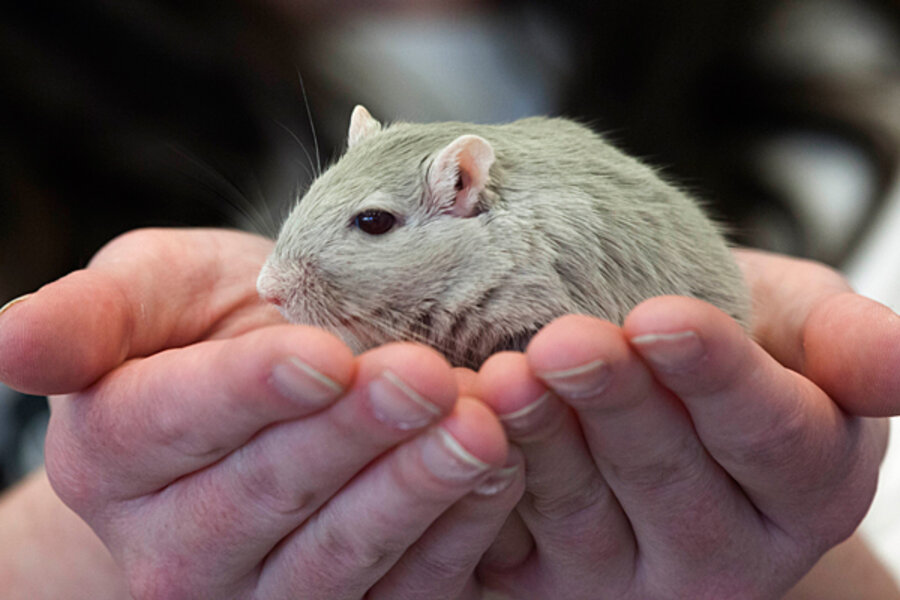Gerbil, mouse astronauts perish on Russian spaceflight
Loading...
In space, no one can hear you squeak.
That's what 45 mice and eight gerbils discovered on April 19 when they were placed inside a Russian space capsule and launched, along with 15 geckos and an assortment of snails, plants, fish, and microorganisms, into orbit some 350 miles above the Earth's surface.
The creatures flew aboard Bion M No. 1, a month-long mission designed to determine how living organisms handle spaceflight.
The answer: Not very well, at least not aboard this particular spacecraft, which touched down in Russia on Sunday. Only six of the original 45 mice survived. All of the gerbils died. So did all of the fish.
Apparently the journey was easier on the geckos, snails, and microbes, who all survived.
Most of the deaths were a result of malfunctioning equipment. The animals were kept in five separate containers, which opened once the craft was in orbit so that the they could move freely. The gerbils suffocated when a malfunction interrupted the oxygen supply to their container. The fish, a species of tilapia, died when the aquarium malfunctioned. Fifteen of the mice starved to death when their food supply failed shortly after launch.
Still, officials declared the experiment, which monitored the animals' vital signs with an array of onboard sensors, an overall success.
"This is the first time that animals have been put in space on their own for so long," Vladimir Sychev of the Russian Academy of Sciences, quoted by Agence France-Presse.
This statement is not entirely true, however. Soyuz 20, an unmanned mission launched in 1975, kept a tortoise in space for three months. The tortoise returned to Earth in good health.
More recently, a jumping red-backed spider named Nefertiti survived 55 days aboard the International Space Station. She died only after being included in an exhibit at the Smithsonian's Museum of Natural History.
The space programs of both the United States and Russia have long traditions so-called biological payloads. In 1947, American rocket scientists launched a V-2 rocket carrying a container of fruit flies 106 miles above the Earth's surface. The flies – probably the first Earthlings to venture beyond our planet's atmosphere – returned safely.
The animals that survived the Bion M flight probably won't be as fortunate as those fruit flies. According to Spaceflight Now, after having endured 30 days on the malfunctioning space capsule, floating amid the corpses of their fellow space travelers, the surviving animals are to be euthanized.
[Editor's Note: An earlier version of this story misspelled the name of the Bion M spacecraft in the summary under the headline. Additionally, it conflated the Soyuz 20 mission with a series Russian circumlunar missions in the 1960s.]








